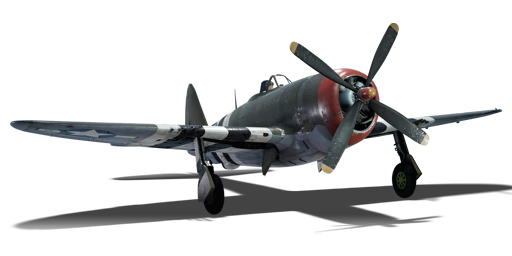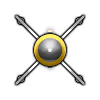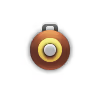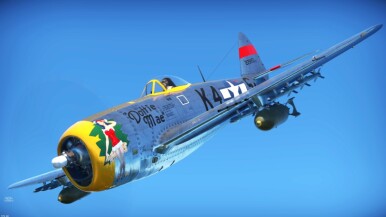



One of the common complaints from early P-47 pilots was the razorback design which greatly limited visibility. In the past, there were attempts to fit a better canopy but it didn't gain any traction until 1943. As an experiment, a P-47 was taken and fitted with the bubble canopy from a Typhoon. After it was deemed successful, the P-47D-25 came to life at the Farmingdale production facility. It was fitted with a bubble canopy as well as a few minor modifications like a paddle-bladed propeller and could carry more fuel. The D-25 also came standard with the Pratt & Whitney R-2800-59 engine which could produce over 2,000 hp with water injection enabled. It was the main engine found in many Thunderbolt variants and around 11,000 were made. After the war was over, many P-47Ds found a new home in various countries like Chile, Iran, and more.
The P-47D-25 has been present in the game since the start of the Open Beta Test prior to Update 1.27. Nicknamed "Jug" the Thunderbolt is quite a heavy fighter but the R-2800 engine makes up for it. It can reach a top speed of 700 km/h (437 mph) but has an astounding structural limit of 885 km/h (553 mph). The D-25 is an excellent aircraft for boom and zoom tactics thanks to its high-speed control and eight M2 Browning machine guns which can be fired from long range. The D-25 is also a good ground attack aircraft thanks to its ample amount of machine gun ammunition and ability to carry rockets and bombs.
flaps
flaps
flaps
brake
| Belt | Belt filling | Armor penetration (mm) at a distance: | |||||
|---|---|---|---|---|---|---|---|
| 10 m | 100 m | 500 m | 1000 m | 1500 m | 2000 m | ||
| API-T/AP/AP/I | 30 | 27 | 20 | 13 | 9 | 6 | |
| AP-I/AP-I/API-T/I/I | 28 | 26 | 18 | 11 | 7 | 4 | |
| API-T/I/AP/AP/AP-I/AP-I | 30 | 27 | 20 | 13 | 9 | 6 | |
| API-T | 28 | 26 | 18 | 11 | 7 | 4 | |
| AP-I/I/AP-I/I | 28 | 26 | 18 | 11 | 7 | 4 | |
| Name | Weight | Slot | ||||||||||||
|---|---|---|---|---|---|---|---|---|---|---|---|---|---|---|
| 62.8 kg |  |  |  |  |  |  |  |  |  |  | ||||
| 117.9 kg |  |  |  | |||||||||||
| 242.6 kg |  |  |  | |||||||||||
| 500.8 kg |  |  | ||||||||||||












Flight performance | |
|---|---|
Survivability |
|---|
Weaponry | |
|---|---|
